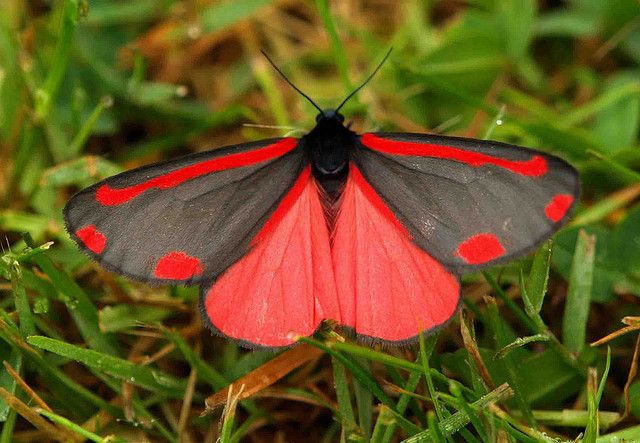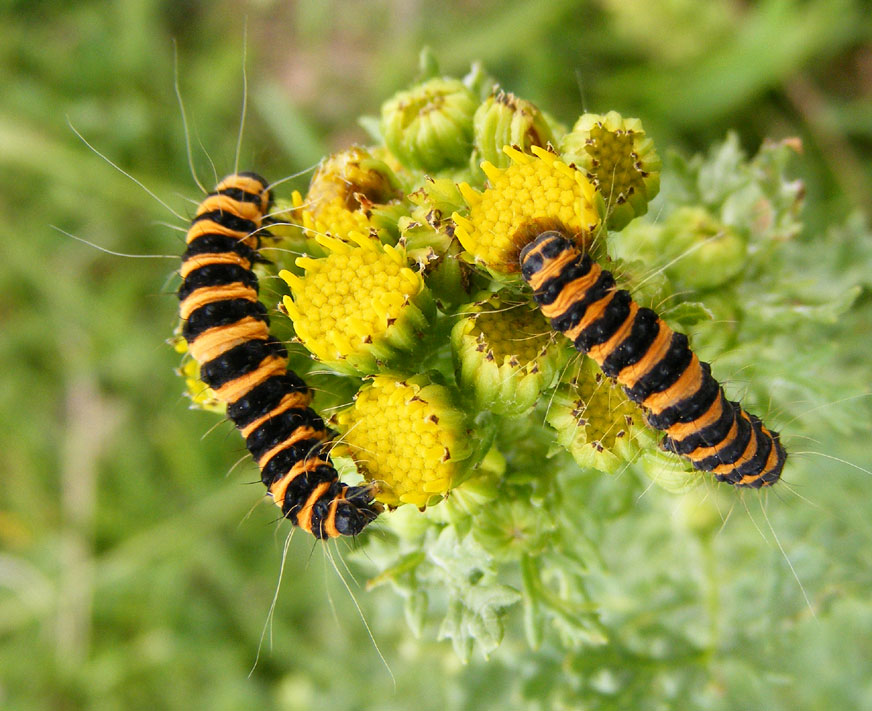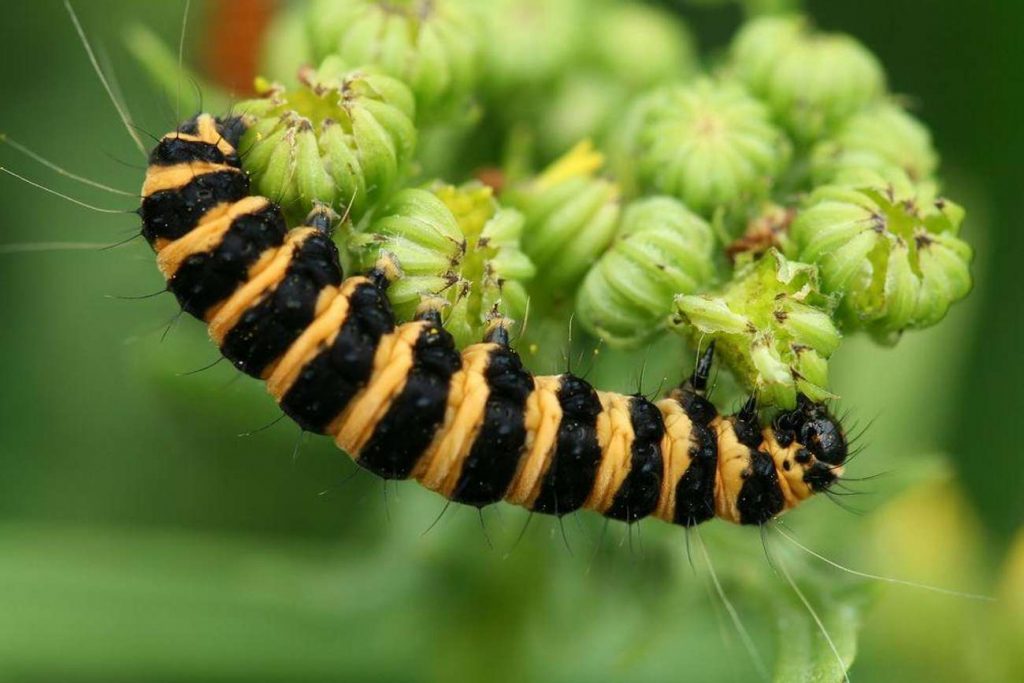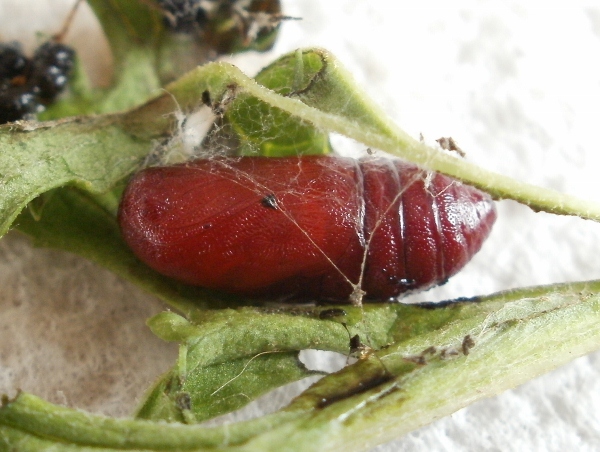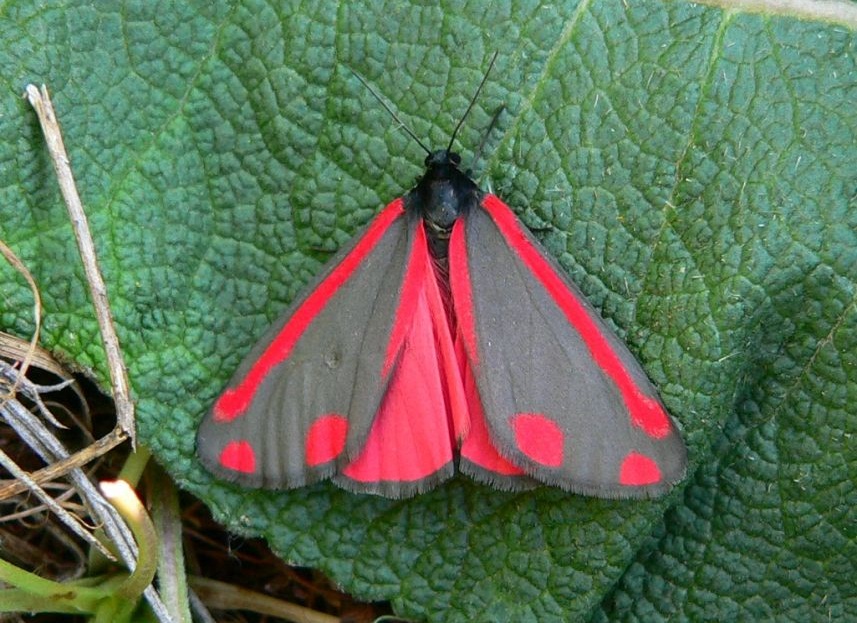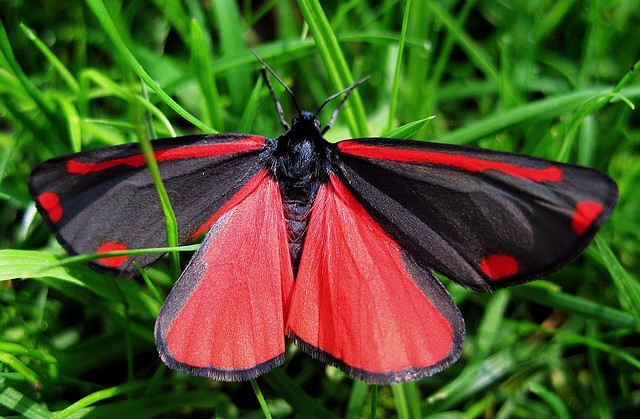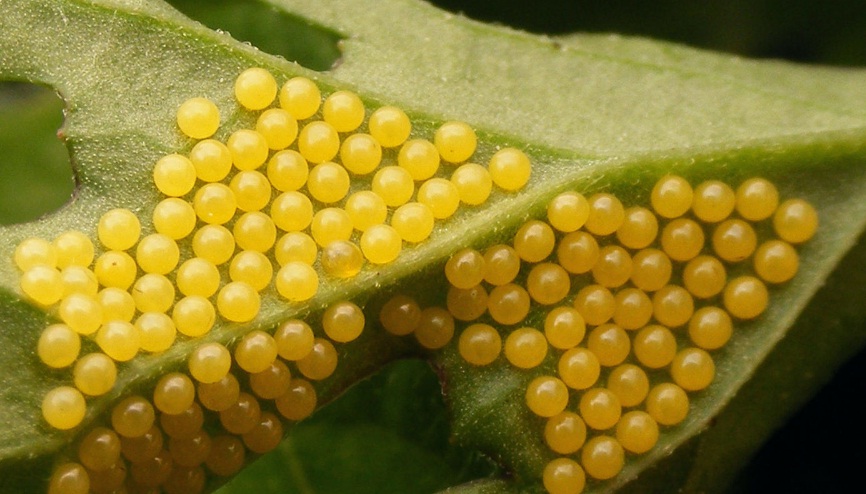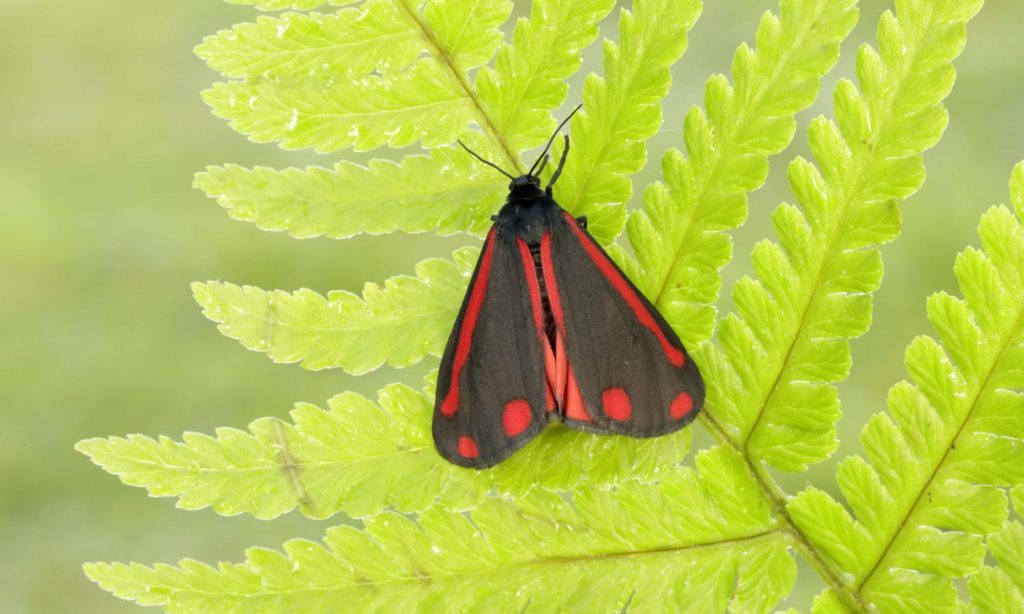Cinnabar Moth (Tyria jacobaeae)
Cinnabar moth of the Erebidae family has a striking red and black body, earning it its alternate name, red and black moth. They are indigenous to parts of Europe as well as west and Central Asia. However, they were introduced in Australia, New Zealand, and North America to control the ragwort plant on which this species’ larva feeds.
i.pinimg.com
Scientific Classification
- Family: Erebidae
- Genus: Tyria
- Scientific Name: Tyria jacobaeae
Description and Identification
Caterpillar
In their initial stage, the larva has a pale yellow body that changes to a combination of black and yellowish-orange stripes upon maturation. They grow to a length of about 3 cm and voraciously feed on the ragwort plants, capable of finishing an entire patch of the plant. When food is scarce, these caterpillars could get cannibalistic going on to eat one another.
Adult Moth
Sexual Dimorphism: Not prominent
Color and Appearance
Forewings: When opened, the forewings are black, also having two red spots on both sides and a pinkish-red line running across them. When closed, the color and pattern remain the same.
Hindwings: When opened, it is pinkish-red with a deep black border at the bottom. When closed, the red portion, along with the black line, remains partially visible.
However, there may be exceptions in the color and pattern though rare. Like, yellow markings on the forewings can replace the red ones, or the forewings can appear completely red or black.
Average Wingspan: 3.2 – 4.2 cm
Flight Pattern: Not recorded
Season: May – July
Quick Facts
| Other Names | Red and black moth |
| Distribution | Native: Parts of Europe, central, and west Asia Invasive: North America, New Zealand, Australia |
| Habitat | Grassland, heath, wetland, dunes |
| Predators | Birds like cuckoo (though the list of predators are less due to their bright colors, often scaring the enemies away) |
| Lifespan of Adults | Not recorded |
| Host Plants | Ragwort, groundsel |
| Adult Diet | Mostly nectar |
Did You Know
- Swedish botanist Carl Linneaus described this moth for the first time in his book 10th Edition of Systema Naturae in 1758.
- They replicate the mineral cinnabar because of the red patches on their wings.
- The cinnamon moth caterpillars have stingy hairs causing allergies in humans if touched.
Scientific Classification
- Family: Erebidae
- Genus: Tyria
- Scientific Name: Tyria jacobaeae

